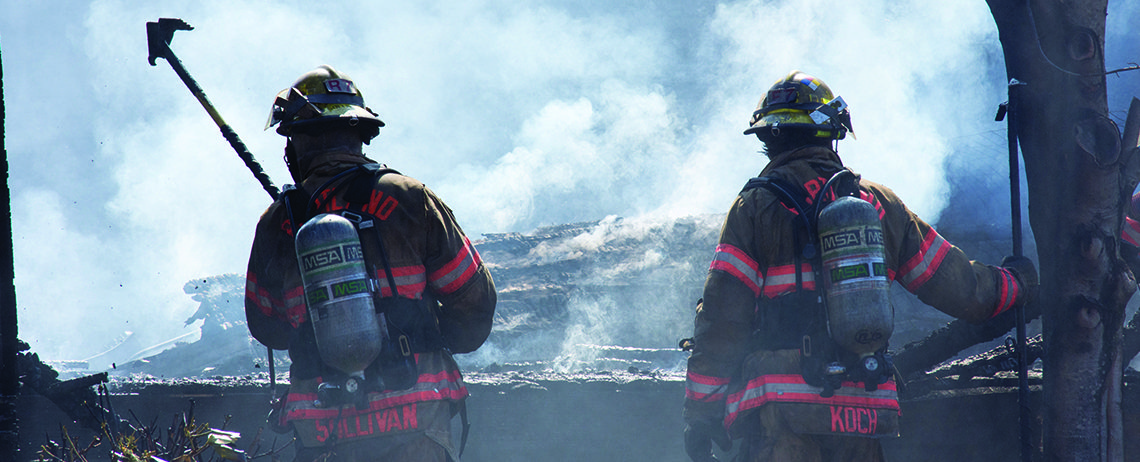What Firefighters Can Teach Us About Risk and Safety in the Workplace
SafetyCulture News | By | 7 Jan 2019 | 3 minute read

There are few jobs more dangerous than being a firefighter. The elements are unpredictable, and the work is unforgiving. One change of the wind, one mistake, and you could be fighting for your life. Firefighters don’t just risk their own lives on the regular, they’re also responsible for the safety of their team and the public. That’s a huge burden to carry, and one that requires serious training.
Fatalities and injuries in the line of duty occur at a rate of one and a half times that of police officers in the United States, and while you might not be putting out literal fires in the workplace, there are lots of things we can learn from the way firefighters do their jobs, and the choices they make.
1. Plan, plan, plan
Even when there’s no fire to put out, firefighters are always working to ensure they are ready to respond to a crisis in an instant. Downtime is used to ensure trucks are clean and stocked, and personnel are rested and ready to go. Everything has its place, so that in the heat of the moment no one is left scrambling for the equipment they need. And that’s not all. Running a fire station on a small budget brings daily challenges, and everyone has to pitch in to keep things running. Writing in Fire Engineering, Craig Haigh says precise planning was one of the first and most useful things he learned from his fire chief.
“As a young firefighter (really more a kid), I saw the benefits of community risk assessment, budget planning, revenue generation, and careful project management. I got to feel the excitement build with the accomplishment of each small objective and the pride associated with bringing a long sought-after goal to fruition. It taught me to work hard, keep my eye on the ball, and not be distracted by the latest fad or what cool new tool our well-to-do neighbors just purchased.
2. Build trust in your team
Firefighters have to rely on each other to survive. That means the level of trust and respect among team members needs to be incredibly high. “Many organizations depend on a team effort to accomplish a mission, but in firefighting it is the team that will save your life, it is the team that will convey to you within the deadly environments in which we work, the spirit and courage that it takes to mold a firefighter’s character,” retired New York firefighter Dennis Smith says.
Not every team is going to face life and death challenges, but the more trust they have in each other, the better equipped they are for whatever problems and issues do arise in the workplace.
3. Open and maintain clear lines of communication
Whether it’s communicating about the conditions inside a burning building, or keeping tabs on colleagues to make sure they’re OK, firefighters know how to talk to one another, and how to make sure their commanding officers know what’s going on too. In every workplace communication is the key to getting things done safely and efficiently, and to making sure that everyone is on the same page.
According to Fire Rescue, “communication is often the root of everything that goes right or wrong”, so it’s crucial to get it right. The three C’s will help you develop strong team-wide communication: Clear, concise, and complete.
4. Be aware of how events at work affect the team
Over 7000 North American firefighters responded to a confidential survey in 2018 that asked them how their work made them feel. According to NBC 10 Philadelphia, the firefighters overwhelmingly reported “stressful or traumatic experiences on the job have impacted their mental health.”
“Among the struggles they say are directly connected to the job: 19 percent have had thoughts of suicide, 27 percent have struggled with substance abuse, 59 percent have experienced family and relationship problems and 65 percent are haunted by memories of bad calls.”
Not every workplace carries the same stressors as firefighting, but talking to your staff about how they’re doing in the workplace will only strengthen trust and improve communication.
Firefighters may do a job that seems risky, challenging and sometimes scary, but they don’t do it without training or systems in place that are designed to protect the public and firefighters. Those systems and the techniques they’re based on aren’t just for crises. They can be used to improve workplaces in any field, and to help put out all fires—even the metaphorical ones.
Important Notice
The information contained in this article is general in nature and you should consider whether the information is appropriate to your specific needs. Legal and other matters referred to in this article are based on our interpretation of laws existing at the time and should not be relied on in place of professional advice. We are not responsible for the content of any site owned by a third party that may be linked to this article. SafetyCulture disclaims all liability (except for any liability which by law cannot be excluded) for any error, inaccuracy, or omission from the information contained in this article, any site linked to this article, and any loss or damage suffered by any person directly or indirectly through relying on this information.





